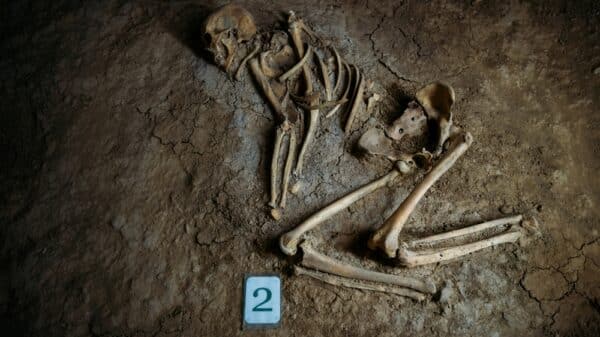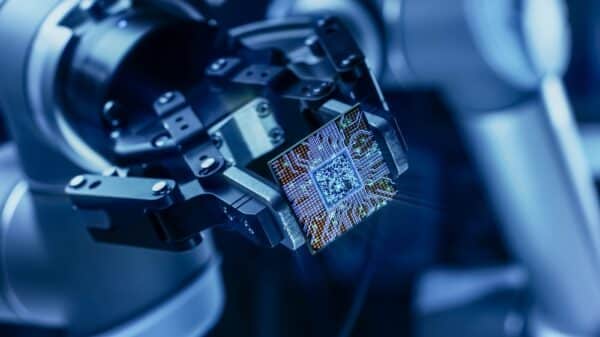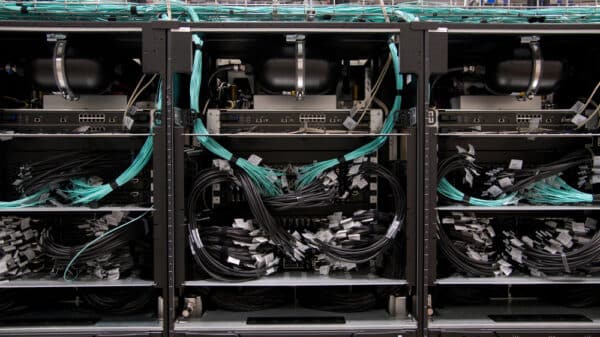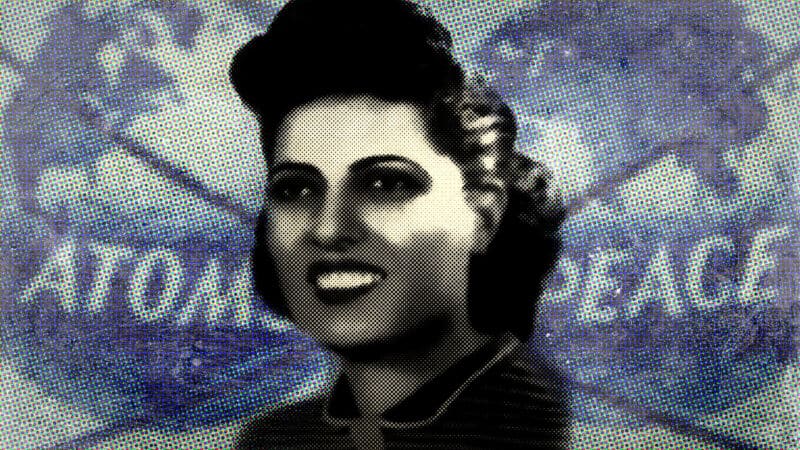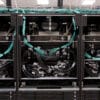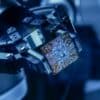The field of science and its technological advancements have always shared a strong connection with military endeavors. However, it was during World War II that the destructive potential of science reached unprecedented heights. The looming threat of nuclear holocaust during the Cold War era led to widespread public concern surrounding governmental practices and the scientists working for them.
Several physicists came to the realization that the consequences of scientific advancements were irreversible. This recognition of growing distrust prompted them to organize conferences and formulate policies to distance themselves from the nuclear menace. Others attempted to portray nuclear technology in a more positive light by highlighting its contributions to energy and medical innovations. These efforts to instill confidence in the public persist till today, as scientists continue to take precautionary steps regarding newer potentially hazardous technologies like gene editing.
During World War II, Sameera Moussa, a relatively obscure Egyptian physicist, played a central role in advocating for the constructive use of atomic energy and engaging the public in this pivotal decision. Her advocacy positioned her as a valuable exemplar for women and physicists worldwide, yet her legacy remains largely underacknowledged due to her tragic fate resulting from her peaceable nuclear power advocacy efforts. Moussa’s life was cut short at 35, under circumstances that remain unresolved to this day.
The Early Life and X-ray Contributions of Moussa
Regrettably, the available records on Moussa’s life are primarily second-hand accounts or hearsay, making it challenging to reconstruct her narrative with precision. Born just north of Cairo on March 3, 1917, Moussa’s childhood remains shrouded in mystery, save for the poignant detail of her mother’s loss to cancer during her formative years. The tragedy of her mother’s demise would later fuel Moussa’s interest in exploring radiation as a tool for combating cancer. Following her mother’s passing, Moussa and her father relocated to Cairo, where her father ventured into the hospitality business. Reports suggest that Moussa’s father, a political activist, might have kindled her later activist spirit.
Buoyed by her academic successes in elementary and high school, Moussa secured admission into Cairo University’s nuclear physics program, honing in on X-ray research. Opting for X-rays as her field of expertise in the 1930s was an astute decision. X-ray technology was gaining widespread adoption in hospitals and private medical practices, with ownership of X-ray machines becoming a norm for medical facilities. In the United States, this surge in X-ray usage spurred the establishment of several radiology technician associations and journals specializing in radiology. Europe, with its longstanding engagement in X-ray research, witnessed luminaries like Marie Curie transporting mobile X-ray equipment across the battlefields of World War I.
Building on the work of her predecessors, Moussa delved into the study of radioactive isotopes for medical imaging, an enduring technique in modern medicine. Her doctoral research captured the attention of Cairo University’s Science Chair, Moustafa Mousharafa, who subsequently appointed Moussa as a lecturer. Progressing to the role of an assistant professor, she emerged as the first woman worldwide to teach at a university while pursuing her Ph.D. This milestone was particularly noteworthy as foreign professors, predominantly British, still predominated in numerous Egyptian educational institutions. Nevertheless, Moussa carved a trail of significant firsts in her career.
Unveiling the Nuclear Fission Equation
Bolstered by her distinguished reputation, Moussa journeyed to Britain in the mid-1940s to complete her Ph.D. Collaborating with fellow researchers, she made substantial strides in the realm of nuclear physics. Alongside her peers, Moussa formulated an equation that elucidated the process of generating X-rays from cost-effective metals such as copper, fostering affordability in medical imaging. As highlighted in a 2022 article by Inside Arabia, Moussa’s “research laid the groundwork for a transformation in the accessibility and safety of nuclear medicine.”
Enthralled by her breakthrough, Moussa concentrated on medical applications of her discovery, striving to reduce patients’ X-ray exposure durations and enhance the mobility and flexibility of X-ray procedures. Espousing the sentiment, “I am intent on democratizing nuclear therapy akin to aspirin in terms of accessibility and cost,” Moussa acknowledged the potential for her equation to be harnessed for a much graver purpose: the creation of an atomic weapon.
Although historical evidence does not pinpoint Moussa’s whereabouts during the atomic bombings of Hiroshima and Nagasaki in 1945, it is plausible that she was then stationed in the UK. Moussa, cognizant of the dual nature of nuclear energy for warfare and peaceful applications, spearheaded the Atomic energy for peace conference in Great Britain under the banner of “Atoms for Peace” (a slogan subsequently echoed by President Dwight Eisenhower in a 1953 address). This gathering was well-attended by her scientific peers and yielded recommendations for establishing a committee to monitor nuclear perils, including nuclear armaments.
Promoting a Facade of Tranquility
The cataclysmic aftermath of the atomic bombings instigated widespread trepidation concerning nuclear power. In a bid to assuage public fears, the American and British governments endeavored to craft a reassuring narrative. For instance, they incentivized researchers to host conferences in an effort to foster a true narrative. Such initiatives were aimed at
Pugwash Conference held in Canada saw scientists from former Allies and Axis nations convening post-war to talk about the future of nuclear arms. Various governments worldwide urged scientists to advocate for the advantages of nuclear power and steer clear of technical, scientific terminology to prevent additional confusion among the general public.
The West soon grasped the potential energy of nuclear power; it aimed to harness it and obstruct its adversaries from doing the same. To mask their aims, the United States and Britain employed the term “peaceful atomic” as a political strategy to secure exclusive deals with countries possessing uranium reserves, like Brazil and South Africa. Dr. Jacob Darwin Hamblin of Oregon State University, in his book The wretched atom, mentions that the concept of the peaceful atom “manipulated social aspirations, fears, and environmental vulnerabilities, especially in developing nations.”
As these agreements often interchanged weapons for uranium, connecting the label “peaceful atom” with them was merely a facade. To prevent a uranium arms race, the US (followed by Britain) played down its significance, underscoring its applications in medicine and agriculture (e.g., pest control or sterilization) as essential benefits. Scientists using the narrative of the “peaceful atom” camouflaged the uranium race and facilitated the establishment of a high-pressure, high-secrecy atmosphere within governmental research facilities across the globe as numerous countries started accumulating nuclear material.
Moussa found herself entangled in this fresh arms race when she toured the United States in The 1950s, post receiving one of the initial Fulbright fellowships. She proceeded to the University of Missouri to extend her research. From there, she reached out to several scientists in California to visit certain nuclear power facilities. In a letter to her father, Moussa expressed, “I have had the chance to tour nuclear power plants in America, and upon my return to Egypt, I will be of significant service to my country and contribute to the peace movement.”
Prior to even stepping foot on the premises, Moussa found herself under scrutiny by security. Owing to not being a US citizen, suspicions arose whether she was a spy trying to gather information about top-secret US nuclear studies for other nations. Although Moussa was eventually exonerated, the government suggested US citizenship as a precautionary measure. She turned down the offer, stating, proverb, “Egypt, my homeland, is waiting for me.” Unfortunately, her refusal might have ultimately led to her demise.
An unsolved homicide
In 1952, Moussa visited a nuclear research establishment adjacent to the University of California, Berkeley. Though there exist multiple narratives about the subsequent events, the overarching themes of these tales remain consistent. On a particular evening, Moussa received an invite to a supper or a power plant tour (based on the source) and requested transportation to the event. She boarded the back seat of the vehicle, and the driver hastened away. However, at a point on the Pacific Coast Highway, the driver abruptly veered, causing the vehicle to plunge 40 feet off a cliff as the driver leaped out. Several versions suggest that another vehicle compelled the crash, yet in both scenarios, the incident aroused suspicion among law enforcement and national authorities.
Since the driver was never identified post-crash and the invitation extended to Moussa turned out to be fraudulent, numerous purported that Moussa was murdered. Speculations surfaced attributing the Israeli intelligence agency Mossad for the incident, alleging an attempt to obstruct Egypt from developing nuclear weapons. Other experts suspected the involvement of the CIA, believing that Moussa had been privy to sensitive information during her visit. To this day, her murder remains unresolved.
Moussa’s tragic demise at the age of 35 in 1952 underscores her significance at that time – someone perceived her as a threat.
Moussa stands as one among several individuals linked to the “Atoms for Peace” campaign who died prematurely. The aftermath of “Atoms for Peace” has been viewed as yielding mixed results. The populace never fully restored trust in scientists post that era. Despite numerous endeavors since that time, this skepticism persists, spanning from outright science denial to reservations regarding vaccines and climate change.
A revived exemplar
In modern times, Moussa remains a role model for budding female researchers globally, with Egyptian students holding her in high regard. As elucidated by Dr. Ruth Mateos de Cabo, a professor at the University Foundation San Pablo CEU, “Role models can inspire, empower, and back students of parallel backgrounds, showcasing what can be achieved and how to attain it. Hence, the more relatable the background, the simpler it becomes for students to connect with them and even walk in their shoes. For instance, having educators of similar racial or ethnic origins heightened student academic attainment, motivation, and prospects.”
Through her studies, Mateos de Cabo found that female role models of equivalent ethnicity can confront conventional gender stereotypes while motivating young women. This holds particular relevance in the field of physics, as presently only 20% of scientists in the United States are women, with some experts forecasting that parity in physics scientists might not be realized until the subsequent century. This gender disparity underscores the significance of identifying role models to motivate the forthcoming generation – and the challenges therein.
“A primary hurdle in integrating female role models in the education sphere and scientific community is the dearth of female representation in these realms,” explained Mateos de Cabo. “According to UNESCO, merely 35% of STEM students globally are women, and they occupy just 28% of research and development roles worldwide. This lack of representation renders it arduous for female students to relate to successful women in their field, thereby impeding their outlook on themselves as prospective role models.”
Raising awareness about figures like Moussa could potentially amplify the visibility of women hailing from diverse backgrounds. “She stood as a brilliant, patriotic, and influential Egyptian woman,” stated Egyptian scholars Maha Metawei at the Electronics Research Institute in Cairo. “She fills us with pride. We perceive her as a magnificent Egyptian figure, a brilliant intellect who laid the groundwork for cancer treatments using radiation, and a devoted Egyptian who insisted on returning home with her research discoveries post her fellowship in the United States. She vocally opposed nuclear weapons at a time when nuclear threats stirred fear among people.”
Image Source: Aurich Lawson | Wikipedia











